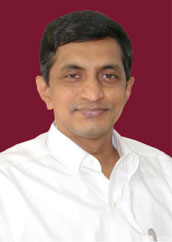|

National
Coordinator of
Lok Satta movement and
National Campaign for Electoral Reforms
|
In India, we have three
seasons: the festival season, cricket and then the election
season. Of these, the schedule for festivals and cricket tourneys
appears to have at least some regularity and order. After
all, it is not too difficult to figure out on which date the
Ganesh Puja falls or when an India vs. Pakistan match is,
in a given year. But speaking of the Indian election season,
it could be upon us like a bin bulaye
mehmaan.
This summer India went through
a protracted electoral battle for the Parliament and a few
state Assemblies, including ours. It was a democratic exercise
of such huge proportions (cost: 1100 crore rupees; electorate:
67 crore Indians), that it was equivalent to conducting polls
in the USA, Europe, Australia and Canada - all at once! But
the next round of assembly elections and Lok Sabha by-elections
is already knocking on the door.
Why do we have by-elections,
in the first place? In many instances, a candidate contests
from more than one constituency and/or for two different legislative
houses - the State Assembly and Lok Sabha. Under the current
law a candidate has to vacate one of the seats within 10 days,
necessitating a bye-election. Occasionally, a sitting legislator
may resign with an intention to either to establish her/his
hold over the electorate or to change party affiliation. Shri
VP Singh did just that when he resigned as the Finance Minister
and MP during the 8th Lok Sabha and later, contested as opposition
candidate from Allahabad and won. Some times, by-elections
become inevitable following the death or incapacitation of
a sitting legislator.
Each bye-election leads to
heightened tensions, political populism, increasing polarization
and diversion of attention away from the broader issues of
governance. In this light, the Election Commission's recent
proposal to bar a candidate from contesting in more than one
constituency, or to seek reimbursement of the expenditure
(from the candidate) for holding this bye-election appears
perfectly reasonable and fair. The taxpayers' money should
be better utilized than for satisfying the whims of ambitious
politicians seeking to maximize their bargaining power.
There is also a deeper, structural
issue here: our first-past-the-post (FPTP) electoral system
sometimes throws up unexpected and embarrassing results when
even bada netas of parties lose elections based on local convergence
of factors like caste, money and muscle power. That is why
they attempt to dilute their risk via multiple candidacies.
Legitimate answer to this real problem lies in adopting an
alternative and better electoral system based on the principle
of proportional representation. Once parties get legislators
in proportion to their voting percentage, there will be no
need for multiple candidacies and by-elections.
India also witnesses frequent
mid-term elections to its state and national legislatures.
Such elections, conducted almost every year, vitiate the political
climate and disrupt the rhythm of the administration. Can
we prevent the atrophy of administration and paralysis of
governance that invariably accompany unscheduled dissolution
of our legislatures?
|
- Jan 2004
- Feb 2004
- March 2004
- April 2004
- May
2004
- June 2004
- July 2004
- August 2004
- September
|
For instance, in the USA, such
an arrangement has made their elections extremely well ordered.
Their president is elected once in four years in the month
of November, on the Tuesday following the first Monday. Even
the national legislators (for the House of Representatives
and Senate), half the governors, state legislatures and local
governments are all elected on fixed dates. Unscheduled vacancies
to legislative or executive offices are filled by means other
than by-elections or by a clearly specified line of succession
inbuilt in the political process.
Elections are and should be
only a means for democratic governance, not an end in themselves.
We do require to adopt alternatives to the present system
to avoid by-polls.
Until then, let the candidates
or political parties pay for the cost of by-elections brought
about by their own volition!
|



